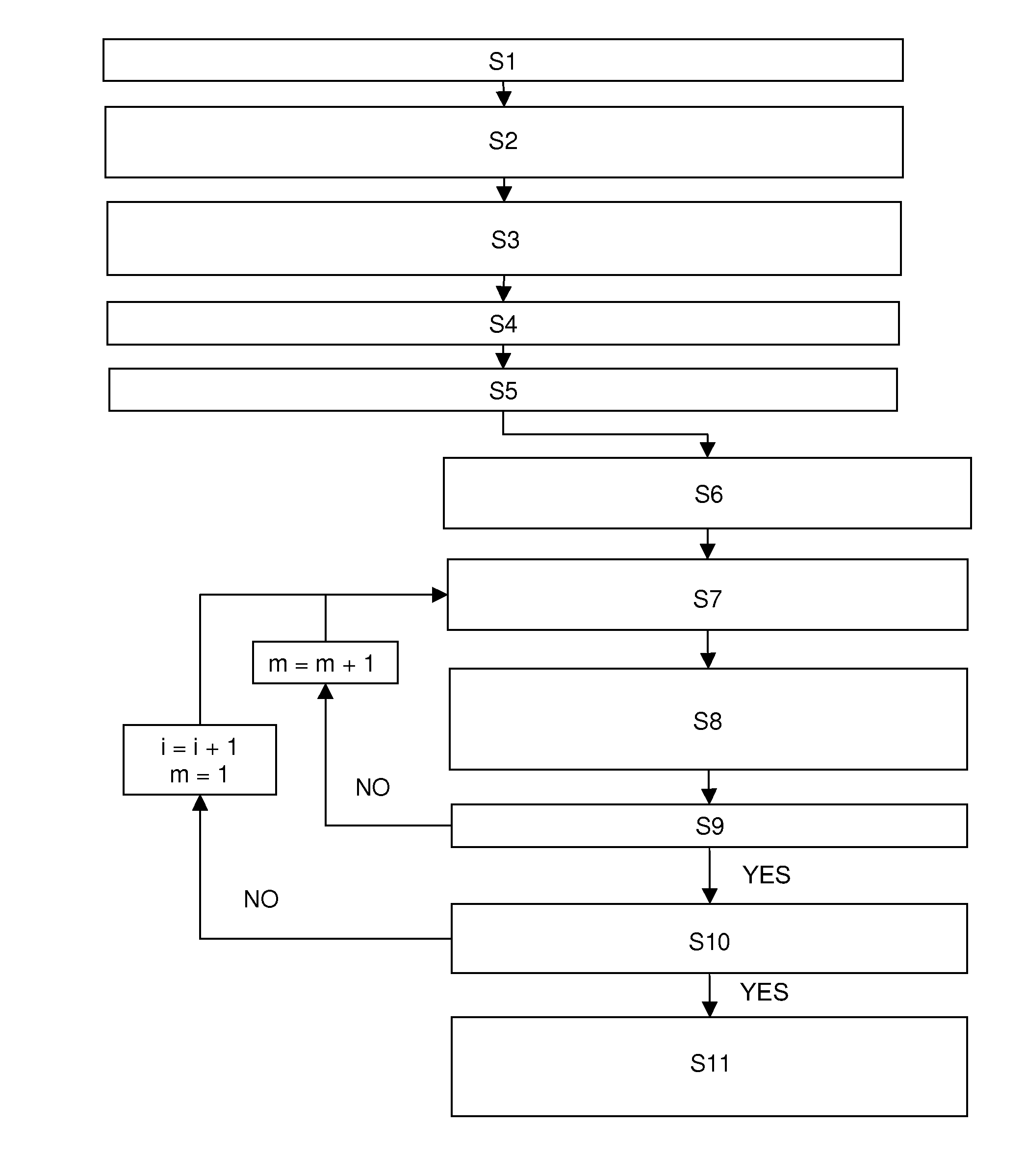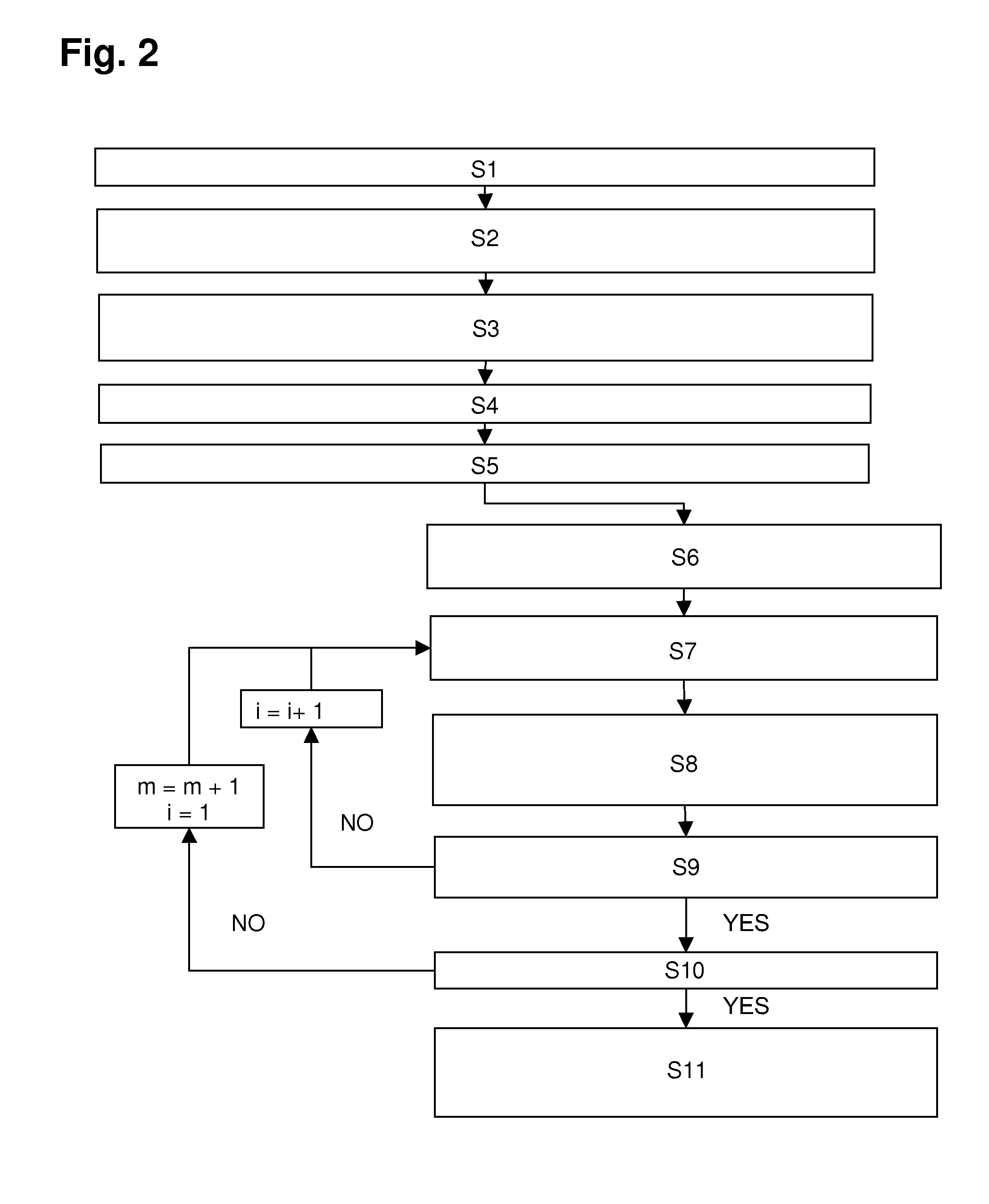Method for determining the spatial distribution of magnetic resonance signals with use of local spatially encoding magnetic fields
a magnetic resonance signal and spatial distribution technology, applied in the field of determining the spatial distribution of magnetic resonance signals with use of local spatially encoded magnetic fields, can solve the problems of large mechanical stress on the nuclear resonance apparatus, excessive noise production, and required gradient strengths, and achieve simplified representation, reduced excitation pulse length, and high spatial resolution
- Summary
- Abstract
- Description
- Claims
- Application Information
AI Technical Summary
Benefits of technology
Problems solved by technology
Method used
Image
Examples
Embodiment Construction
[0064]FIG. 1 shows the inventive method steps, which are described in more detail below. In particular, FIG. 1 illustrates the following method steps:[0065]S1=Selection of the imaging region[0066]S2=Definition of the encoding scheme P for the spatial encoding by local and / or global gradients after excitation[0067]S3=Definition of the phase encoding scheme A for the spatial encoding of the MSEM regions during excitation[0068]S4=Definition of an excitation pattern for each phase encoding step of A[0069]S5=Calculation of the RF pulses for each phase encoding step of A[0070]S6=Initialization and start of a spatially resolving MR measurement with phase encoding step m=1, i=1[0071]S7=Excitation of the object with RF pulse for phase encoding step i[0072]S8=Evolution of the spin system in the object, encoding according to step m of P and acquisition of the magnetic resonance signals[0073]S9=All encoding steps of P traversed?[0074]S10=All excitation phase encoding steps of A traversed?[0075]...
PUM
 Login to View More
Login to View More Abstract
Description
Claims
Application Information
 Login to View More
Login to View More - R&D
- Intellectual Property
- Life Sciences
- Materials
- Tech Scout
- Unparalleled Data Quality
- Higher Quality Content
- 60% Fewer Hallucinations
Browse by: Latest US Patents, China's latest patents, Technical Efficacy Thesaurus, Application Domain, Technology Topic, Popular Technical Reports.
© 2025 PatSnap. All rights reserved.Legal|Privacy policy|Modern Slavery Act Transparency Statement|Sitemap|About US| Contact US: help@patsnap.com



